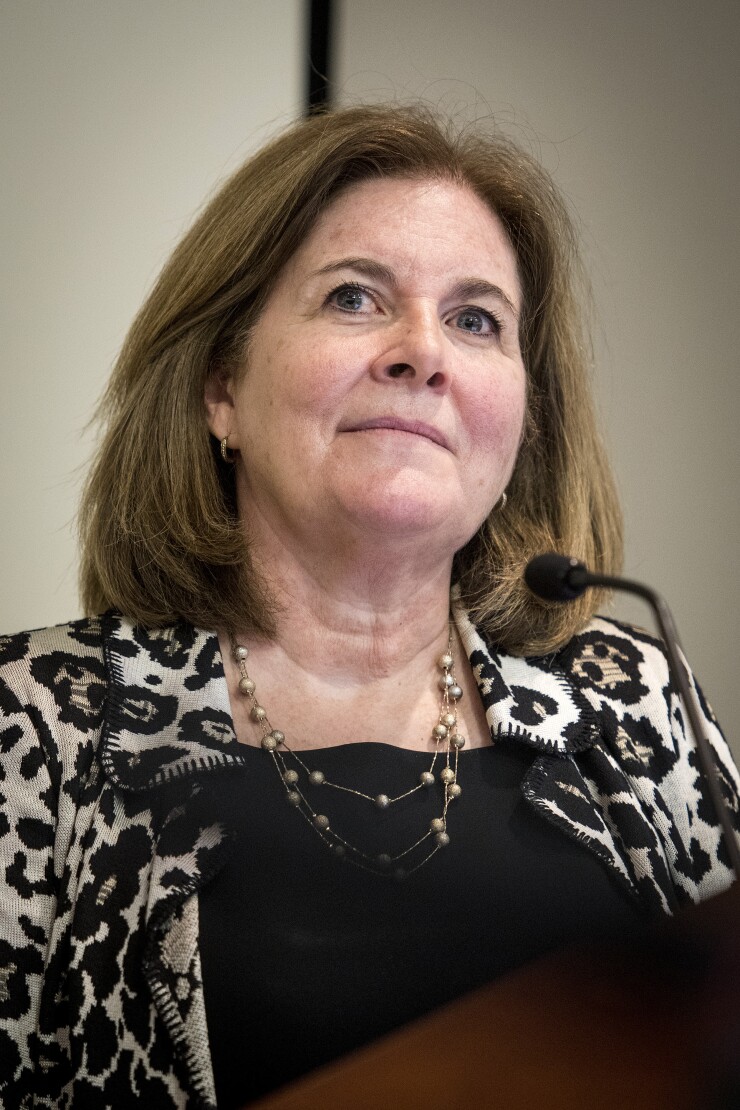The Federal Reserve should begin shrinking its balance sheet this year and put the reductions “on autopilot,” Federal Reserve Bank of Kansas City President and CEO Esther L. George said Tuesday.

“My own view is that the process [of shrinking the balance sheet] should begin sometime this year by reducing reinvestments in mortgage-backed securities (MBS) and long-term Treasury securities,” George said at a California economic summit, according to prepared text released by the Fed. “Once it begins, however, the runoff in the portfolio should be on autopilot and not reconsidered at each subsequent FOMC meeting. Otherwise, the Committee would need to re-evaluate and make adjustments that will potentially complicate monetary policy and provide few benefits to the real economy.”
While the Federal Open Market Committee did not raise rates last week, a move George said she supports, gradual accommodation removal is still planned. Even though the Fed had raise rates three times in this cycle, “financial conditions remain accommodative,” she said.
"[M]oving too aggressively risks slowing economic activity or even derailing the expansion. Removing accommodation in small doses is consistent with the economy’s improving fundamentals and perceived benign rates of inflation," George said. .She warned that moving too slowly in raising rates could lead to a recession.
Deciding when, how and how to communicate a plan “to begin the process of reducing the size and altering the composition” of the Fed’s balance sheet is an “unprecedented” challenge, she said.
While labor markets have shown “remarkable improvement,” the average 2% GDP growth “is quite modest by historical measures,” George noted.
The first quarter weakness in GDP is not a reason to pause the rate hikes, she said, since it “reflects unusually mild winter weather that led consumer spending on housing and utilities to decline sharply in the first quarter.”
Another reason is that the first quarter has shown weakness in “recent years.” She said, “I suspect we are seeing this same dynamic, at least in part, in 2017.”





